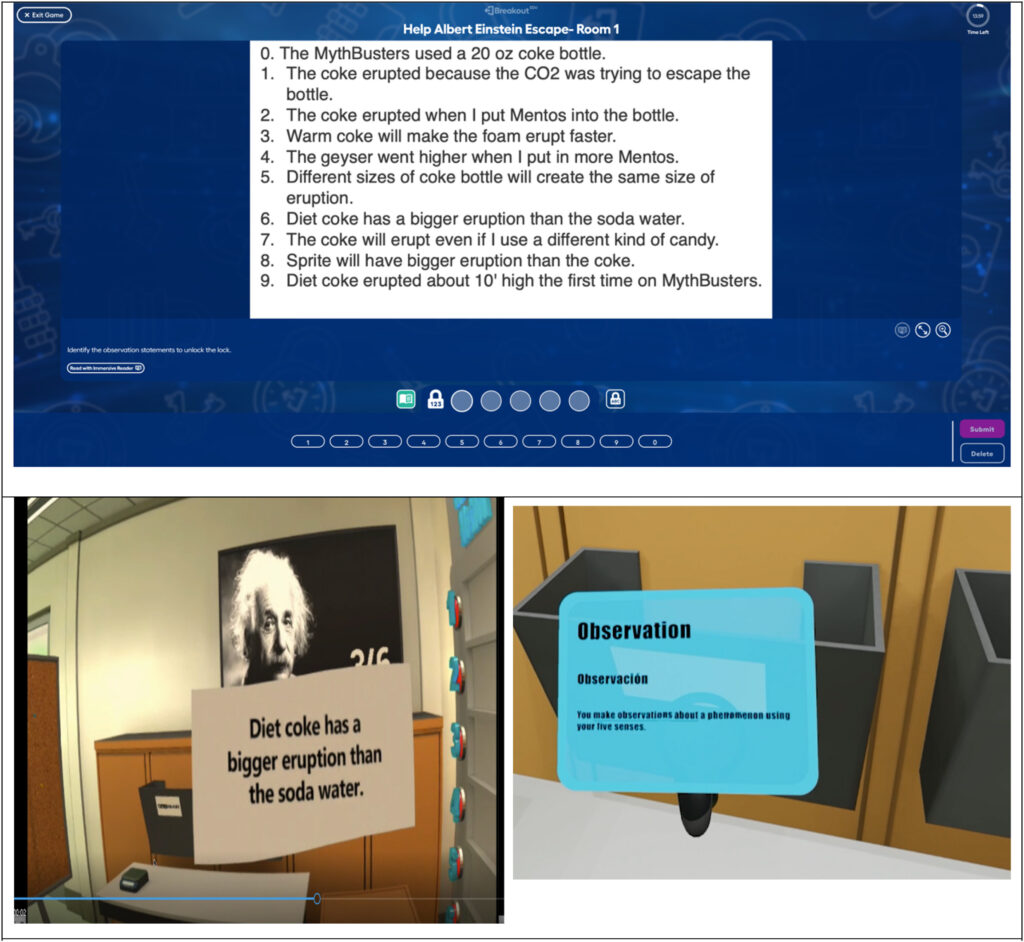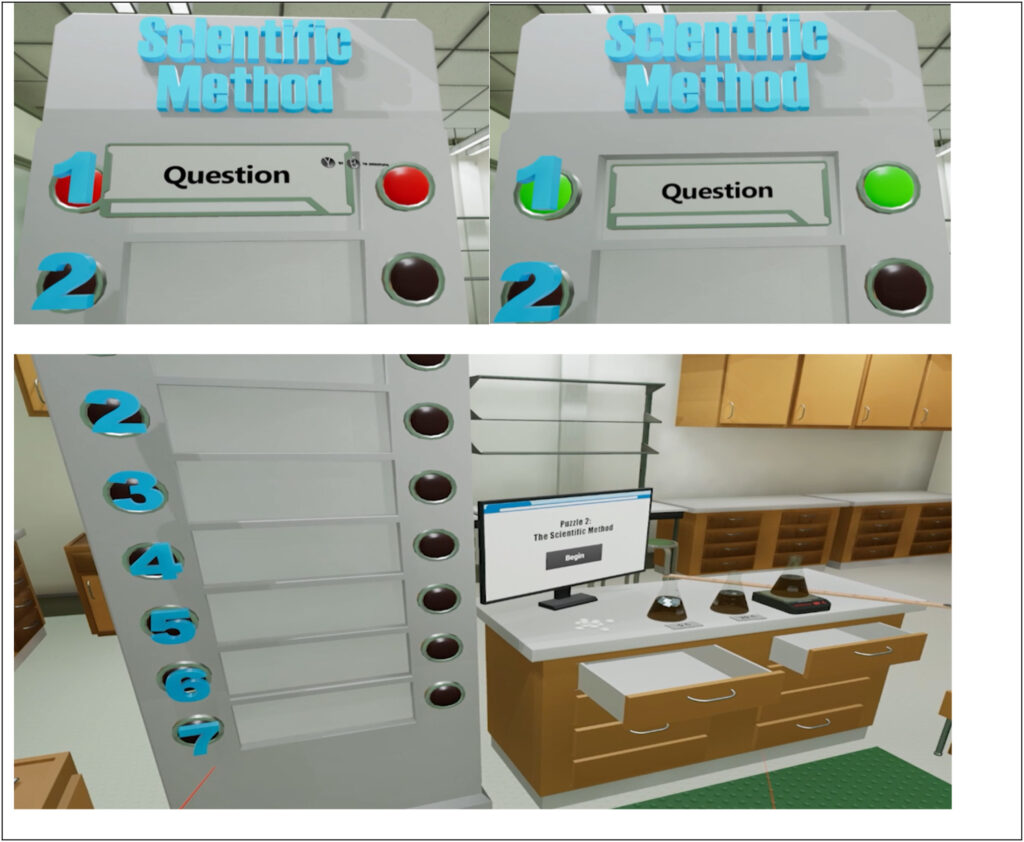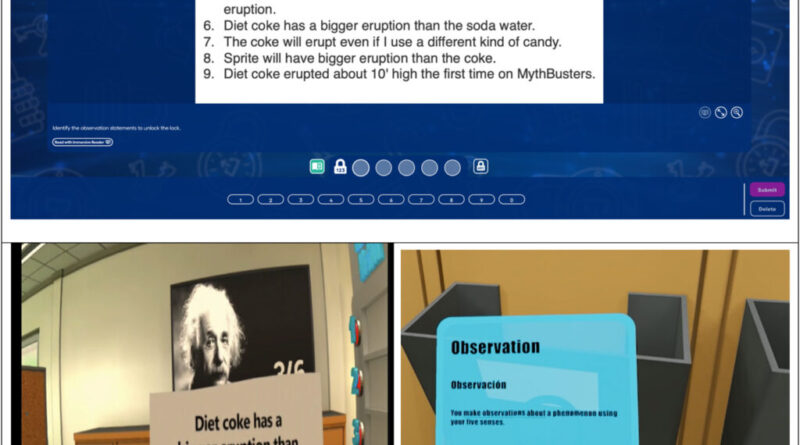Virtual reality game used to help students in science
Communication methods that go beyond language, writing can be important for multilingual learners
Multilingual students face unique challenges that can damage their school performance. New teaching methods can help close this gap, according to a new study from the University of Georgia.
In the United States, English is the most common language used in classrooms. Schools also tend to rely on spoken communication to teach and take exams to assess learning.
That can make it difficult for multilingual students to express themselves. This is especially true in scientific circles, with their specialized vocabulary and complex sentence structures.
So a UGA researcher designed an immersive reality game to convey scientific concepts to students in new ways.
The students were tested before and after they played the game either on the computer or in augmented reality, and the researchers compared their scores to see if the game helped the students understand the information.
All students’ scores improved after playing the game, and multilingual students performed better than their English-speaking peers.

The top image shows what students using the desktop version of the game saw while the bottom two show the actual version of the game. (Sent)
Visual cues, body movements provide other ways to learn ideas
The virtual reality game used visual, audio and physical movements to give students more ways to learn and express their knowledge through education. Researchers have referred to this as creating multiple meanings, or using multiple communication methods to process and convey information.
This study suggests that being able to create meaning from multiple sources is important for multilingual learners.

Ai-Chu Elisha Ding
“Virtual reality provides means of meaning-making or opportunities for meaning-making that go beyond verbal communication,” said Ai-Chu Elisha Ding, lead author of the study and UGA’s Mary Frances Early associate professor. College of Education.
“The multilingual students did very well because they had the support they needed, and they had different ways of expressing their understanding than the usual ways they did in science class.”
Multilingual students can benefit from multiple communication methods
Outside of the classroom, people use more than their words to communicate. Hand gestures, facial expressions and body language all convey their meaning in a conversation.
These non-verbal cues are often overlooked in schools.
Ding said: “In American education, students express their feelings in English.” “The interactions in the classroom are also very verbal, which means that students and teachers express themselves through written or oral language. That creates a lot of obstacles for multilingual students.”
Virtual reality can help overcome those barriers by helping to convey ideas visually rather than verbally.

The screenshots show the student’s feelings in a real environment when solving a scientific method problem in the game. When the first correct answer (in this example, a Question) is placed on the board, the light turns green to indicate the correct answer. (Sent)
Virtual reality can add non-verbal information to studies
The principal investigator and her colleagues worked with a middle school science teacher and an English as a New Language teacher to create an authentic game with content taught in science classrooms. The game and lessons are designed to help students learn science and improve their language skills at the same time. The study involved 97 seventh grade students at an urban middle school in Indiana.
The researchers developed the game in two ways: one with real headsets and the other on a desktop computer.
The game with the headset focused on visual and audio cues to provide feedback and allow students to interact with the environment around them. The computer game relied heavily on text to convey information and was designed to be less immersive.
One of the key takeaways from this study is for teachers to pay more attention to using pictures and gestures to help students process information.” —Ai-Chu Elisha Ding, College of Education
Afterwards, the students were tested on their knowledge of the information covered in the games, how they made connections between the ideas presented and how they translated their ideas into writing.
All students saw improvement in their test scores. Multilingual students also performed as well as English-only students. Additionally, students who played the immersive VR game improved their test scores significantly more than students who played the computer game.
Attention is important in science, and a virtual reality game puts students in an environment where they can learn a topic in depth, according to the researchers. The computer system cannot provide the same kind of experience, which explains why those students do not perform well.
Although virtual reality games are not available in every classroom, Ding emphasized that students can still benefit from teachers adapting to new teaching methods.
“Teachers can do a lot of different things to make this kind of nonverbal communication happen more in the classroom,” Ding said. “One of the most important aspects of education is that teachers should pay attention to using pictures and gestures to help students process information.”
This article was published in Learning and Teaching and was written by Eunkyoung Elaine Cha, a doctoral student in UGA’s Department of Workforce Education and Educational Technology. This study was funded by Ball State University through a Creative Teaching Grant.
#Virtual #reality #game #students #science
